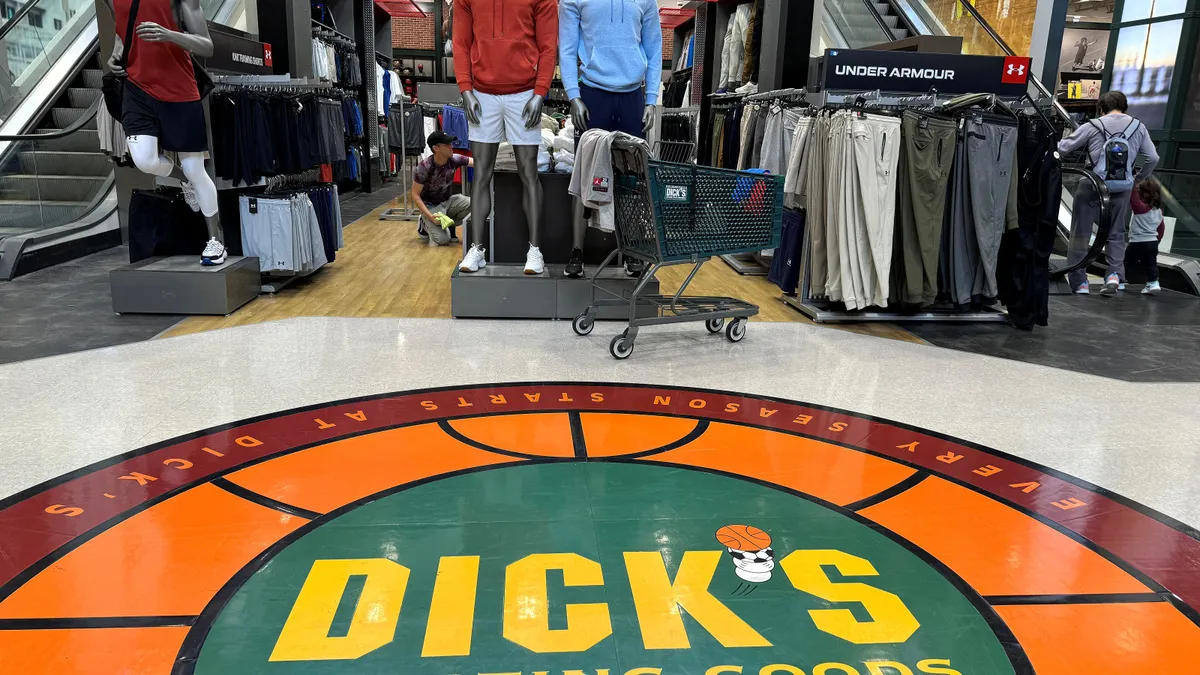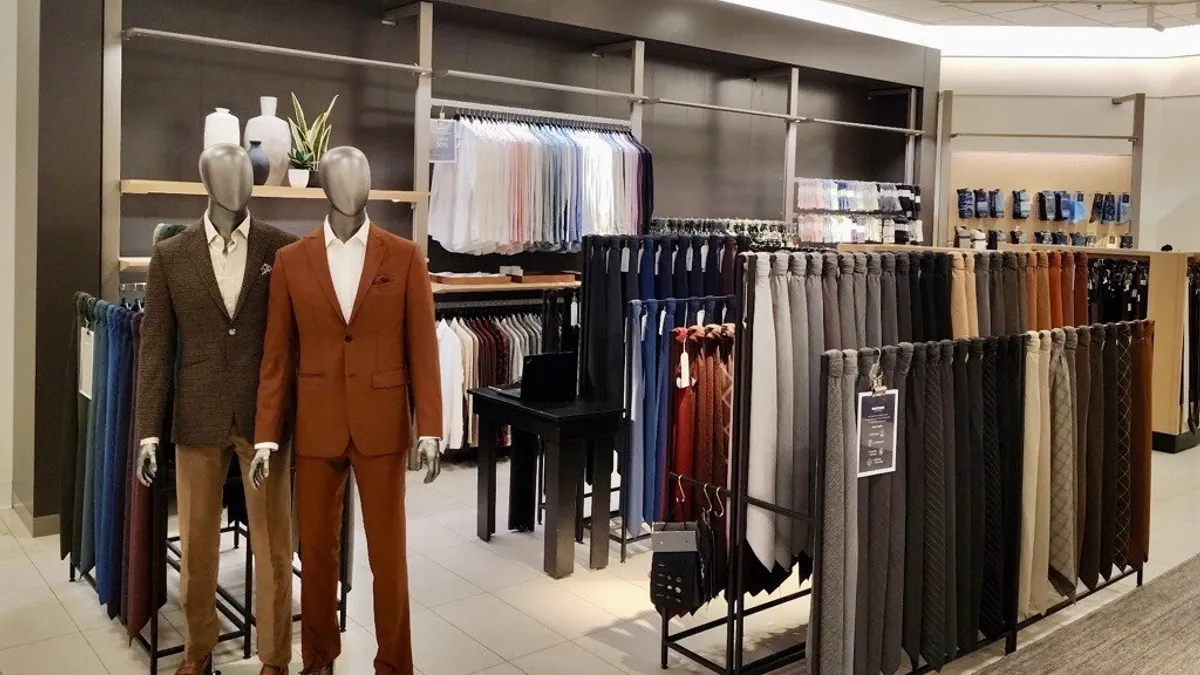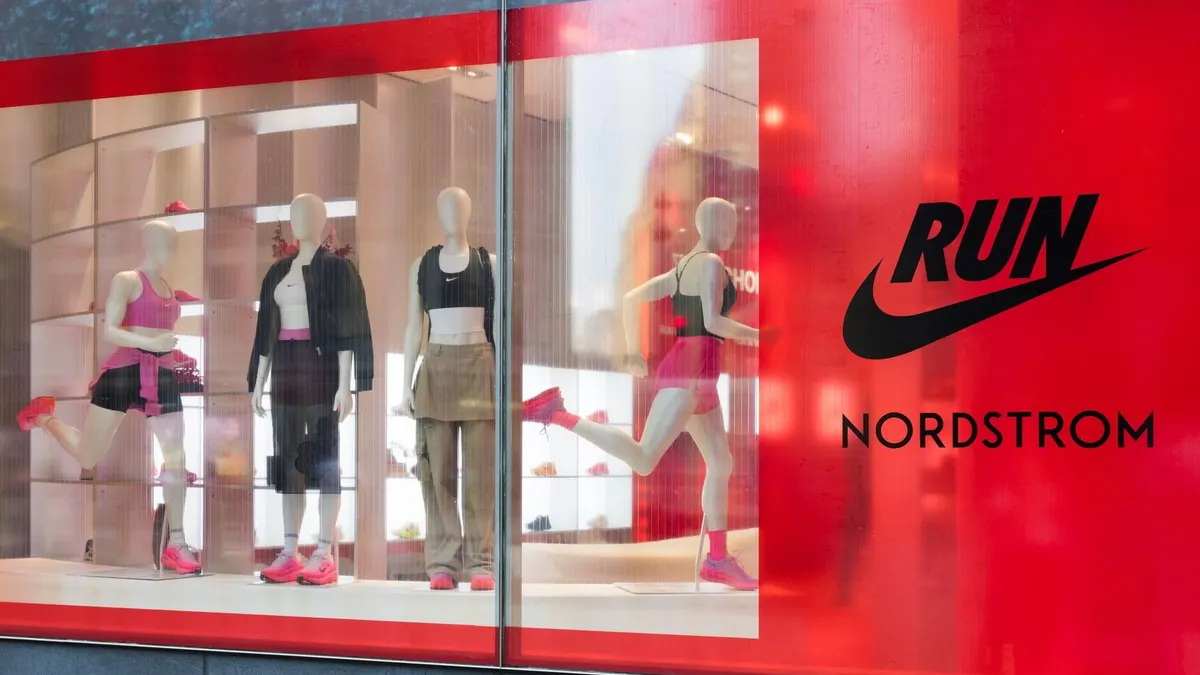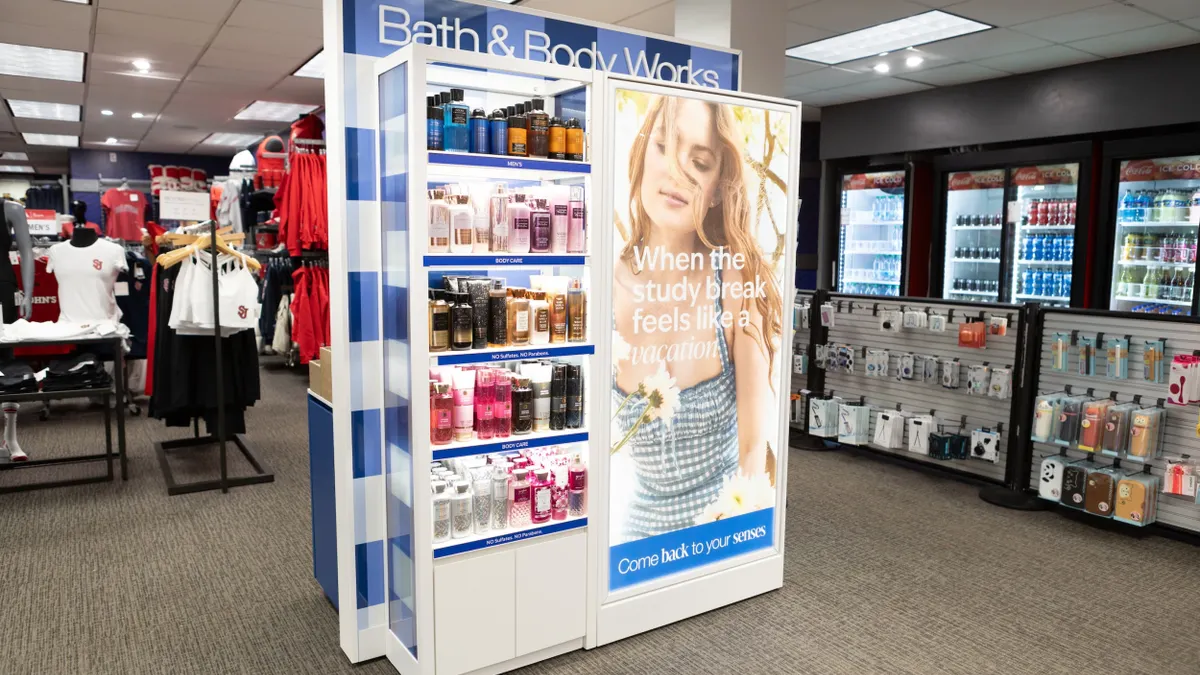The pages of the 1942 Sears Christmas catalog held much that might seem quaintly old-fashioned today.
The department store retailer’s easy payment plan, which could be laid out in a simple grid, has been replaced by sophisticated retail credit cards that offer various rewards and complex terms. The wooden toy tanks and metal fire trucks featured as Christmas toys are far more likely to be made of plastic and make electronic noise today. With World War II raging in Europe and the Pacific, the catalog advertised war bonds and products that could be sent to soldiers and even devoted pages to imploring readers to save spare nails for the federal government.
The mere existence of a printed Sears catalog would be just as alien to today’s consumers. The retailer axed the paper catalog in the 1990s and Sears is hardly alone. But the printed catalog isn’t gone. In fact by some measures, in some sectors of retail, it’s thriving. Retailers still mail billions of catalogs every year, and tens of millions of consumers still make purchases based, at least in part, on images and copy printed in catalogs that find their way to mailboxes.
Today the paper catalog has become primarily a marketing tool — one of special importance during the holiday season. And for many, it remains an important sales channel. The most sophisticated retailers are continuously working to build a seamless omnichannel operation and experience that uses catalogs, websites and physical stores seamlessly and interchangeably to help customers shop and make purchases.
The original omnichannel
A quarter century back, generalist catalogs like those of Sears, J.C. Penney and Spiegel could weigh pounds and carry nearly everything a retailer had on offer that year. They also allowed retailers to reach customers no matter where they lived, and customers could order products free of a laborious trip to the store.
Sounds familiar? "What the internet is, is a catalog. It’s an electronic catalog," Nick Egelanian, president of retail real at estate consulting firm SiteWorks, said in an interview. "In the days when there wasn’t internet, the equivalent of Amazon was the Spiegel catalog or Sears catalog, and they were both four or five inches thick, had stiff physical limits and were very heavy."
"I think the purpose of the catalog is as an advertising function, as a top-of-mind function, as a visual function."

Nick Egelanian
President, SiteWorks
"In a sense, all we’ve really done is transfer a big portion of catalog sales to the internet," Egelanian added. The reasons for that are pretty straight forward. As Egelanian points out, listing items is cheaper and more efficient on the internet, and assortments and prices can be changed instantly.
Yet the paper catalog is still with us. L.L. Bean, Ikea, Williams-Sonoma, Restoration Hardware, J. Crew, Bonobos — names old and new, selling all manner of stuff, are still printing catalogs in 2017. Although as Egelanian notes, catalogs have gotten smaller and land less frequently in consumer mailboxes.
But for many pure play retailers, they remain an essential way to reach customers, both prospective — as many catalogers sell their customer lists to peers — and loyal. Anna Vichitcholchai, a Silicon Valley-based consultant with RetailNext, described catalogs as the "first omnichannel" medium for retailers to master.
One of the catalog’s main advantages is also one of its most elemental qualities: It lands directly in a customer’s hands. Even if it’s walked directly from mailbox to trash can, it still offers more time than marketers and creative staff spend with customers through direct emails, which can be deleted sight unseen.
The catalog can be touched, skimmed with minimal effort or eye strain and, perhaps most importantly, can be attractive in a way digital images aren't. Even younger consumers notice. Millennials, for example, are only 15% likely to ignore direct mail, compared to 50% who say they ignore digital ads, according to a report from the U.S. Postal Service, which noted results from an experiment showing that physical marketing "triggered activity in a part of the brain that corresponds with value and desirability."
"I think the purpose of the catalog is as an advertising function, as a top-of-mind function, as a visual function," Egelanian said. "I think all those things play into why you would continue to [use] catalogs even though the internet offers greater depth."
"I think it’s the difference between e-books and printed books," Ken Morris, principal at consulting firm Boston Retail Partners, told Retail Dive in an interview. "It’s a piece of paper they can manipulate." As an example, he points to his own wife, who Morris says flips through paper catalogs while watching TV, though she owns a smartphone and a tablet.
Vichitcholchai pointed to one of her clients — Marine Layer, which started out as a digital only player — as an example of a retailer that used paper catalogs to break through the "noise" of the online world and create "brand ethos."
"They saw catalogs as an opportunity to leverage marketing efforts and enter new markets," Vichitcholchai said. "Marketing through catalogs is now creating a very personalized experience." This, she added, is done through high-end content that resembles the editorial material in magazines. "It’s just another layer of the experience."
Less paper, but plenty of dollars at stake
All that said, the paper catalog’s peak is clearly behind it, if you measure in terms of sheer mail volume.
In 2016, some 9.8 billion catalogs were mailed to consumers, according to the Data & Marketing Association. (In perhaps a sign of the times, the 100-year-old DMA rebranded with the new, tech-friendly name last year, having formerly called itself the Direct Marketing Association.)
Last year’s volume is roughly half the 19.6 billion catalogs sent just a decade ago in 2007 — but it’s still a lot of catalogs. Moreover, retailers spend around $9 billion every year on catalog marketing, according to DMA. And not without reason. Some 100.7 million consumers made catalog purchases last year, according to DMA. Additionally, almost 40% of apparel shoppers, and more than a third of electronics and office supplies consumers, first learn about products through direct mail, according to data from Magid emailed to Retail Dive.
Morris said pure-play catalog retailers have been growing as a sector at 10% year over year. "I was speaking to some private equity people who had investments in a number of catalogs, and they came back and said this was an area they were investing in because the growth was sustainable," he said
And while the volume of catalogs has waned over the past decade, Egelanian, from his own observations, thinks the percentage of catalogs coming during the holiday season has increased. "I will probably get half the catalogs I get for the entire year between now and Christmas," he said. He added that this was likely a strategy to increase advertising through all mediums in an effort to pump up awareness, fourth quarter sales and of course to "try to stimulate their product as a gift idea."
'A key driver of sales'
If the paper catalog has durable value that lingers well into the future, it will likely be its power as a marketing medium.
Two names came up frequently in Retail Dive’s discussions with industry consultants: Williams Sonoma Inc. and Restoration Hardware. Of Restoration Hardware, Morris said: "I think their catalog is a work of art. It’s very, very high end. People end up wanting to see the products [in stores] because of how beautiful they look on the page."
In its 10-K, Restoration Hardware said its catalogs, which the furniture retailer calls "source books," were "one of our primary branding and advertising vehicles" and "a key driver of sales through both our websites and retail stores." Catalogs and e-commerce sales together make up 45% of the company’s net revenue.
Restoration Hardware said it can better control brand representation by coordinating the creative work on its catalogs in-house. (A spokesperson for the company declined to make an executive available for interview and referred Retail Dive instead to its regulatory filings.) This allows Restoration Hardware to "present our merchandise in lifestyle settings that reflect our unique design aesthetic," according to the retailer.
It’s a moving target, as all creative work can be. After putting out a more modern look in its catalog layouts last year, executives decided they had moved the visual style of the catalog too fast too quickly. "I think we just shifted the core book too far," CEO Gary Friedman said in a September conference call with analysts, according to a transcript from Seeking Alpha.
"I think as we take the interiors book, it’s really important to evolve great brands slowly. Great brands usually don’t swing around," he noted. "They are like watching a clock ... if you look away from it for a few hours it moves, but you never really saw it move. And I think if you picked up the book we mailed last fall and you page through and compared it to previous books, it really shifted too contemporary" early on in the catalog.
As for Williams-Sonoma, the retailer is scaling back its paper efforts even as many see them as one of the best catalogers around. "I don’t think anyone can beat Williams-Sonoma — Williams Sonoma with all its brands [which include Pottery Barn and West Elm]," Egelanian said. "They started out as a catalog company. They understand the internet, understand catalogs, and they use them interchangeably with the stores."
Even so, CEO Laura Alber said in an August conference call with analysts, the company has in recent months reduced its catalog spending on direct mail while increasing digital spending. Chief Digital and Technology Officer John Strain chimed in on the call to say, "And it’s working."
More specifically Strain said that "revenue directly derived from digital marketing channels have improved solidly and we’re going to continue to optimize catalogue spend or shipped dollars into the digital channels. We’re seeing strength in non-brand search terms, affiliates, remarketing, social programs, and these are more than offsetting any declines we’re seeing in email."
The 'philosophy' of cataloging
Integrating catalogs with both e-commerce and store operations is key to making the most of all channels.
With retailers like Restoration Hardware, "It’s a whole philosophy with these guys," Morris said. Artful images in catalogs might spur someone to going to a gallery to look at furniture and, days or weeks later, customers might place their purchases online.
After looking at in-store samples of paint colors for his own house at a Restoration Hardware near Boston not long ago, Morris asked for a manager. "I asked him, ‘What happens when I go home and I buy this, does your store get credit for the sale?’ He said, ‘No, we don’t get credit for the sale. We don’t even track it.’ They only track geographic sales. The catalog drives trips to store, the store drives a trip to the web later."
"The catalog drives trips to store, the store drives a trip to the web later."

Ken Morris
Principal, Boston Retail Partners
And while catalog retail might seem quaint in the digital age, retailers who still live by the catalog manage and exploit huge and sophisticated data sets. "It’s all about the individual strategies of the retailers and how they measure the results they get in these various channels," Egelanian said. "And they do measure. They’re measuring the return they get on a catalog sale, they’re measuring the return they get on an ad. They’re measuring all these things."
Catalog retailers typically code their catalogs to create data sets they can match to sales and develop a sophisticated understanding of who their customers are, where they live and what they want. Morris thinks Sears made a dramatic error when it dropped its catalog in the 1990s. "Sears sold everything," he said. "When they got rid of catalog, they sold all that CRM information. Everybody today is dying to get that customer info. … It’s an asset that no one else has."
Of course, it’s not all upside for a cataloger’s operations. Catalogs are expensive, for one. Creative talent costs money. Paper and postage cost money. Ray Hartjen, director of marketing for RetailNext, noted in an interview that producing a page of a catalog can run five or six figures. Restoration Hardware, for example, said in an annual filing that the retailer had $61.3 million and $35.8 million in capitalized catalog costs for 2016 and 2015 respectively.
There are risks specific to catalog production as well. Tastes change quickly, especially in the age of Twitter and Instagram. Retail websites can match the speed of digitally driven tastes, but catalog displays are frozen in time, so retailers must choose carefully.
Additionally, as executives point out in Restoration Hardware’s 10-K, there is a fine balance in deciding how many catalogs to send and to whom. Oversaturate, and a lot of money spent on paper and postage gets wasted. Send out too few catalogs, and the retailer could lose sales. Moreover, production delays can scuttle a perfectly timed seasonal release, as it did for Restoration Hardware last year.
When paper meets digital
Catalogs have survived the digital age so far, but the internet is always hungry for as much of the physical world as it can fit inside its giant mouth. Tech companies and tech-savvy retailers are looking to blend catalogs with the digital world wherever it might make sense.
As one example, Ikea, together with augmented reality company Metaio, developed 3D and AR capabilities for the Ikea catalog three years ago. Starting in 2014, the Swedish furniture retailer’s catalog allowed readers to virtually place furniture featured in its pages inside their houses.
More recently, Facebook has been offering its ad services to retailers with a new platform that tries to capture the catalog experience in mobile ads for users of the social network. J.Crew, West Elm and Williams-Sonoma were among the catalogers testing the format for their business.
The platform allows consumers to access information about retail items presented in a "lifestyle template image," according to Internet Retailer. Users can scroll and tap their way through other catalog "pages" in the ads or link to the retailer’s website.
These might be adaptations to the times. On the whole, people over 55 receive more catalogs, according to the American Catalog Mailers Association. That means generations reared on smart phones and digital media receive fewer. But paper still holds currency for retailers and customers.
David Naumann, vice president of marketing for BRP, noted studies that have shown people can spend upward of 20 minutes looking at catalogs compared to the seconds they might spend looking at product images displayed online.
"When you have that physical catalog, customers might ponder it longer, even write notes on it," he said. "It’s something you really can’t replicate in other media."
This story is part of our ongoing coverage of the 2017 holiday shopping season. You can browse our holiday page and sign up for our holiday newsletter for more stories.




















